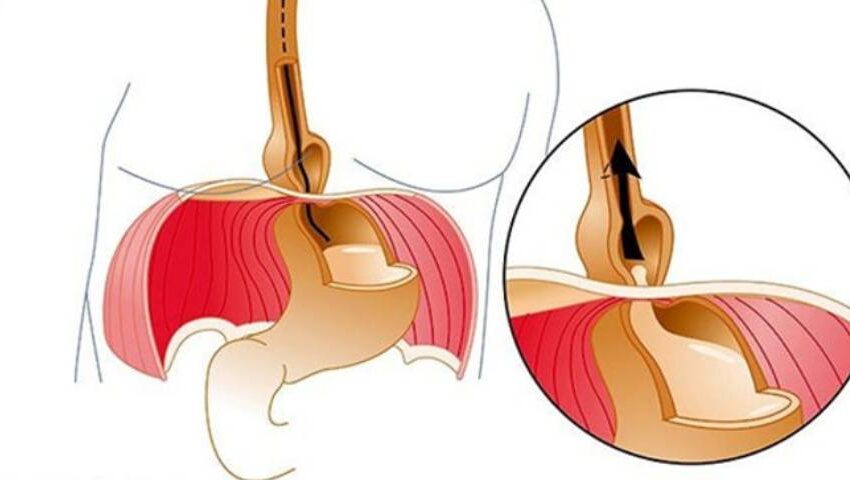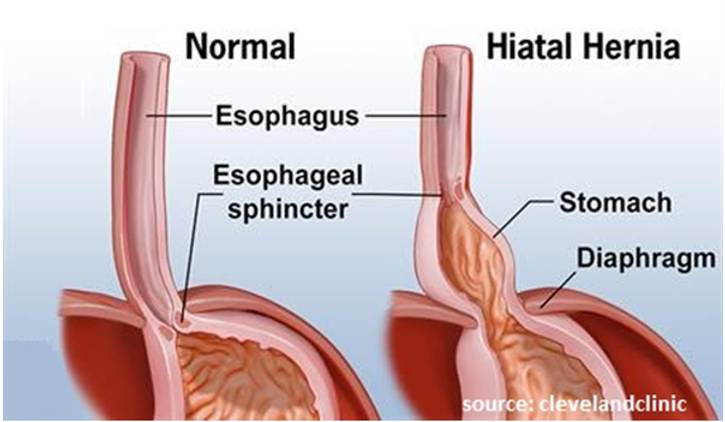
- 23/02/2021
- Dr. Samrat Jankar
- 0 Comments
- Blog
Hiatal Hernia and How it Causes Acid Reflux

A hiatal hernia is a disease in which your stomach’s small part bulges through a hole inside your diaphragm. This hole is known as a hiatus. It is a normal, anatomically correct opening that helps your esophagus to link to your stomach.
The Hiatal. The hernia itself can contribute to the growth of both acid reflux and a chronic type of acid reflux known as gastroesophageal reflux disease (GERD).
You can visit a hernia specialist in Pune to be treated for Hiatal hernias. The condition has various treatments, ranging from watchful waiting in mild conditions to surgery in severe cases.
Now that you know what hiatal hernia is and its role in acid reflux let us understand the symptoms.
Symptoms of hiatal hernia
Hiatal hernias do not often bring signs that you will recognize until the stomach’s protrusion through the hiatus is huge. Small hernias of this form are mostly asymptomatic. You may not be aware of one till you do medical testing
for an unconnected condition.
Larger Hiatal hernias are enough to make stomach acids and undigested food reflux into your esophagus. This shows that you are likely to display the standard signs of GERD. These involve:
- Heartburn
- Chest pain that increases when you lie down or bend over
- Fatigue
- Abdominal pain
- Dysphagia (trouble swallowing)
- Frequent burping
- Sore throat
A wide variety of underlying factors can cause acid reflux. Testing may be needed to find if you have a hiatal hernia or some other structural abnormality behind your GERD signs.
Speak with your specialist about reflux signs that do not become better with lifestyle, diet changes, or over-the-counter antacidsNow that you know the symptoms of hiatal hernia and GERD, let us understand how hiatal hernia is diagnosed.
Diagnosis of hiatal hernia
Imaging tests are utilized to find a hiatal hernia and any injury that an acid reflux causes. Among the most used imaging tests is the barium swallow X-ray, sometimes known as an esophageal or upper GI.
You have to fast for eight hours before the test to ensure that your gastrointestinal tract’s upper portion (your stomach, esophagus, and part of your small intestine) is visible on the X-ray.
You will drink a barium shake before the test. The shake is a chalky, white substance. The barium allows your organs simpler to see on the X-ray as it travels through your intestinal tract.
Endoscopic diagnostic equipment is also utilized to diagnose Hiatal hernias. An endoscope (a thin, flexible tube equipped with a tiny light) is threaded below your throat while you are sedated. This helps your specialist find out inflammation or other factors that may be causing your acid reflux. These factors can involve ulcers or hernias.
Treatment for hiatal hernia
Controlling hernia-related GERD with medications
Over-the-counter heartburn medicines can relieve the periodical burning sensation that may stem from a moderately-sized hiatal hernia. They can be taken as required the whole day in many cases.
Prescription medicines for GERD not only provide you relief, but few can also assist in curing your esophagus lining of hernia-associated acid reflux.
Managing your eating and sleeping timetable can also help adjust your GERD signs when you get a hiatal hernia. Consume small meals the whole day and avoid foods that trigger heartburn.
Try not to lie down for a minimum of three hours after eating to stop acids from returning to your digestive tract. It would be best if you quit smoking as well. Smoking can raise your acid reflux risk.
Surgery for hiatal hernia
Surgery to fix a hiatal hernia may be required when diet modifications, drug therapy, and lifestyle management do not adjust signs well enough. The right candidates for fixing hiatal hernia through surgery may be those who:
- Experience serious heartburn
- Have an esophageal stricture (an esophagus narrowing because of chronic reflux)
- Have severe esophagus’s inflammation
- Have pneumonia (due to aspiration of stomach acids)
The hernia repair procedure is done under general anesthetic. Laparoscopic incisions are created inside your abdomen, helping the hernia specialist to push the stomach out from the hiatus gently and return to its proper position. Stitches tighten up the hiatus and help the stomach from slipping through the opening again.
Recovery time following the procedure may range from three to ten days in the hospital. You will get nutrition through a nasogastric tube for many days post-surgery.
Once you are permitted to consume solid foods again, ensure you consume small quantities the whole day. This can encourage healing.
